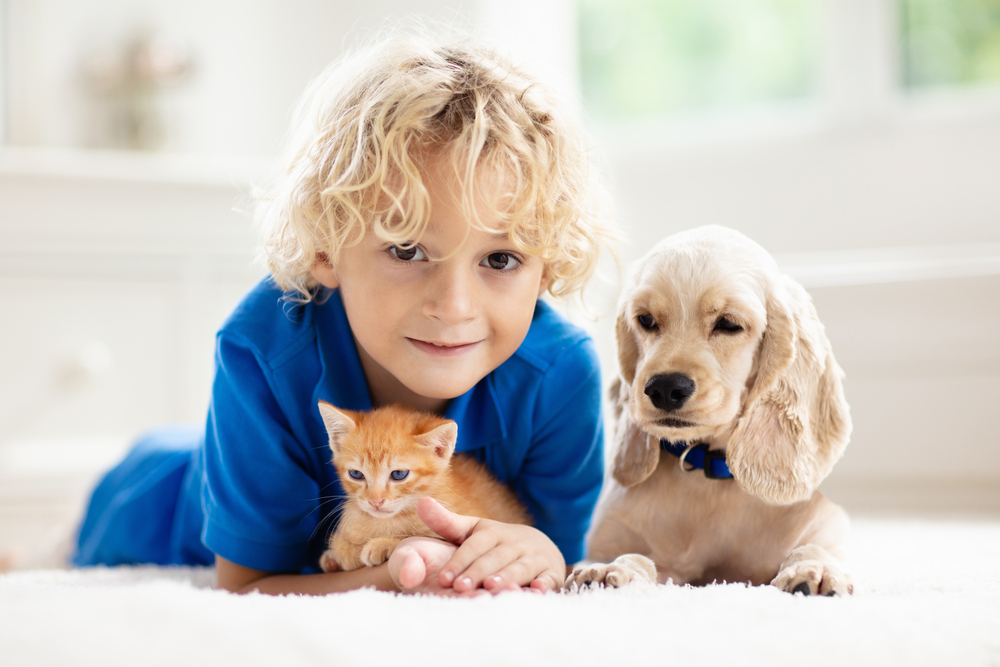Whether you’re going on a road trip or basking in the Australian sun from the comfort of your own home, no matter where pet owners spend their summer, they must consider the safety of their pet as temperatures rise.
More than a quarter of Aussie pet owners take their pets on holidays or road trips1, and with endless pet-friendly beaches and activities this country has to offer, summer is the perfect time to explore your local surrounds and enjoy time in the great outdoors with your pet.
To ensure all pet parents can enjoy a safe summer with their buddy, PETstock VET Dr Sasha Nefedova has compiled an essential summer survival guide.
Provide plenty of water and shade
Warm weather combined with a limited supply of water or shade can lead to your pet suffering from severe heat stress and dehydration. Keeping your pet comfortable on a hot day, whether you are at home or not, is your responsibility as a pet owner.
The most common signs of dehydration include loss of skin elasticity, acting flat or lethargic, sunken eyes, excessive panting or even collapse. If you notice any of these signs, take them to your local vet immediately for an examination.
Never leave your pet in the car
Even if it’s just for a ‘quick’ trip to the shops, you must never leave your pet unattended in a car, especially during the warmer months. The temperature inside a car can take as little as one to two minutes to rise from air-conditioned levels to ambient, and seven minutes to reach 40 degrees2. Leaving them in a hot car can result in dehydration, heatstroke or even cause death.
If you see another pet owner’s dog in a car and are concerned for its safety, you can call emergency services and explain the situation. If the car is in a public shopping centre or supermarket car park, approach the customer service desk and advise them of the situation along with license plate details so they can make a public announcement on their PA system to alert the owner.
Pet sunscreen
Just like humans, pets too can get sunburnt and there are certain breeds who are more susceptible to the sun and require preventatives such as sunscreen to avoid skin cancer or other sun induced skin diseases. It’s important that owners take pet-friendly sunscreen on all daily walks or trips to the beach during summer and apply regularly to minimise the risk of their pet developing sun-related health issues.
Ensure your pet has access to all day shade and shelter and fresh water daily during all four seasons.
Plan your walks
The best time to take your dog on their daily walk is either early in the morning or late afternoon when the temperature has dropped, unless you have access to body of water or shade that can work to keep your pet cool. If you do walk them during the day, walk on grassed areas and always avoid hot pavement to ensure the heat doesn’t burn your pet’s paw pad. As a rule of thumb, put your hand on the pavement for seven seconds before heading outdoors with your dog. If it’s too hot for your hand, then it’s also too hot for your dogs’ paws.
If you let your dog off the lead remember snakes like to live around rivers and creeks. If you notice your dog come back from a run in tall grass or near a creek looking wobbly, vomiting or just not quite right contact your vet for further advice.
Beach safety
Be prepared by packing essential items such as plenty of fresh water, a bowl, waste bags, sunscreen, and towels.
Keep an eye on your buddy and always be on the lookout for risks such as snakes, fishhooks, or jellyfish. Inquisitive dogs may get bitten, stung or ingest dangerous items. Make sure your dog is always within eyesight (and earshot) so you can catch them before they touch something they shouldn’t.
After a day at the beach, monitor them back home and be aware of any odd behaviour as your buddy could be dehydrated or feeling unwell from ingesting saltwater. Contact your closest vet immediately if you are concerned.
Fire safety plan
During bushfire season and days of high risk where there is an increased chance or erratic winds and hot, dry weather, pet owners need to ensure their pets are safe when facing a possible emergency evacuation.
Important things to include in your pet plan include bedding, food and water, towels and woollen blankets to cover and protect your pets. If you decide to leave early, know where you could house your pet and discuss with neighbours about protecting your pet if you are not at home during a bushfire. For more advice visit the CFA website.
Dr Sasha Nefedova – PETstock VET General Manager
Dr Sasha Nefedova joined the PETstock team in August 2016 following several years at the University of Melbourne developing their veterinary CPD programs. She has worked as an emergency clinician in the UK and Animal Accident and Emergency Centre in Melbourne. Her clinical interests include animal behaviour, endocrinology and wound management. She no longer practices clinical medicine and has a strong interest in business strategy and leadership.









